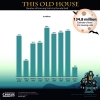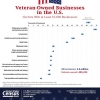Sep042015
Posted at 12:01 PM
The first observance of Labor Day was likely on Sept. 5, 1882, when some 10,000 workers assembled in New York City for a parade. That celebration inspired similar events across the country, and by 1894 more than half the states were observing a “workingmen’s holiday” on one day or another. Later that year, with Congress passing legislation and President Grover Cleveland signing the bill on June 29, the first Monday in September was designated “Labor Day.” This national holiday is a creation of the labor movement in the late 19th century — and pays tribute to the social and economic achievements of American workers.
Following are some key statistics compiled by the U.S. Census Bureau in honor of Labor Day on September 7, 2015.
157 million
Number of people 16 and over in the nation’s labor force in June 2015.
16.2 million
The number of wage and salary workers age 16 and over represented by a union in 2014. This group includes both union members (14.6 million) and workers who report no union affiliation but whose jobs are covered by a union contract (1.6 million). Among states, New York continued to have the highest union membership rate (24.6 percent), and North Carolina again had the lowest rate (1.9 percent).
$50,033 and $39,157
The 2013 real median earnings for male and female full-time, year-round workers, respectively. The real median household income $51,939, about 8.0 percent lower than in 2007.
53%
Projected percentage growth from 2012 to 2022 in the number of industrial-organizational psychologists (1,600 jobs in 2012), the projected fastest-growing occupation. Meanwhile, the occupation expected to add the greatest number of positions over this period is personal care aides (580,800).
For more key statistics in honor of Labor Day, please go to the latest issue of the U.S. Census Bureau's Facts for Features.




